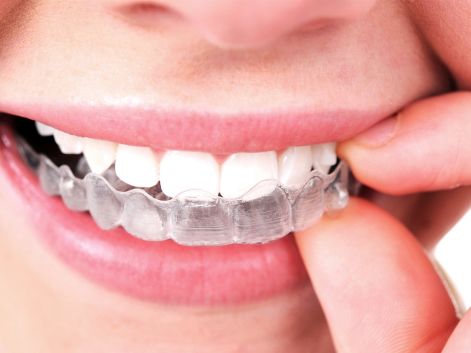Why is Invisalign a Better Option than Traditional Braces?

Invisalign is a revolutionary treatment to straighten crooked or misaligned teeth. It is an improvement over braces for many reasons.
You can find a dentist offering Invisalign treatment by searching online. Use search terms such as Invisalign in Springfield (or your location) or Invisalign near me to find dental professionals offering the treatment.
Only your dentist can tell you if Invisalign is a better option for you over braces. But the Invisalign treatment offers some clear advantages over braces.
Invisalign vs. Braces
The structure –
Invisalign, as the name indicates, involves nearly-invisible structures for the treatment. The aligners are made from medical grade plastic material (polyurethane resin) that is not visible on the teeth.
Braces are metals structures consisting of brackets and thin wires. These wires are visible and look unsightly. When you get braces, you need to live with them for the duration of the treatment.
The ease of the procedure –
Invisalign aligners are created using 3D imaging or scanning. There is no need for invasive methods to take the impressions of the teeth to design the aligners for your teeth. Braces require extensive work in fixing the wires.
The duration of the treatment –
Both Invisalign and braces correct crooked teeth over a period of time. Both treatments require regular visits to the dentist. You will need to get your Invisalign aligners replaced or checked every 4-6 weeks as your teeth continue to improve. The aligner tray may need to be changed every week or so. The duration of the treatment will depend on the extent of your problem.
The comfort level –
Invisalign aligners are more comfortable to use than braces. The plastic aligners are lightweight and contain no sharp edges. There is always a risk with braces; the wires can become entangled with your clothing.
Braces can also be painful at times. If the wires get stuck on something, you will need to see your dentist to avoid any pain. During an injury, wires can cut through your tongue or inside of the cheeks and cause bleeding.
You can remove the aligners when you eat if you don’t wish for them to get overly dirty. You don’t have such conveniences when you have braces.
The maintenance –
If you are undergoing the Invisalign treatment, cleaning your teeth is less complicated compared with when you have braces. You can simply remove the aligners and brush your teeth as usual. You can also rinse and clean the aligners.
When you have braces, it is a pain to remove the food stuck in the wires. Brushing can also be painful, and cleaning the teeth quite difficult. Improper cleaning can lead to other problems such as gum diseases, infections, and a foul smell in the mouth.
The cost –
Invisalign can be at times more expensive than braces. The actual cost will depend on the extent of the treatment and your dentist’s experience. But the cost for both are quite comparable. Many insurance plans cover Invisalign treatment.
Some dentists also offer flexible payment options. So, the cost of dental problems is not that big of an issue these days. When you seek the treatment at a good and reputable dental clinic, you will be able to find a payment solution as per your needs.
The issue of confidence –
Both Invisalign and braces straighten teeth. But kids and teenagers are more likely to feel confident with a treatment that is not as visible as metal wires on your teeth. Let’s face it; you are not likely to feel confident with crooked teeth as well as with metal wires. With Invisalign, you have an option to correct your misaligned teeth with invisible structures.
Many people seek teeth-straightening treatment as adults. Using invisible structures is a much more attractive option than metal braces when in the workplace or out and about with your partner.
The Bottom Line
Invisalign is the treatment for those who do not want to use braces but wish to straighten their teeth. It offers an easier and convenient way to correct misaligned teeth. Invisalign can also correct dental problems such as overbite, open bite, underbite, and gapped teeth. Your dentist can help you get the right teeth-straightening treatment as per your unique needs.





